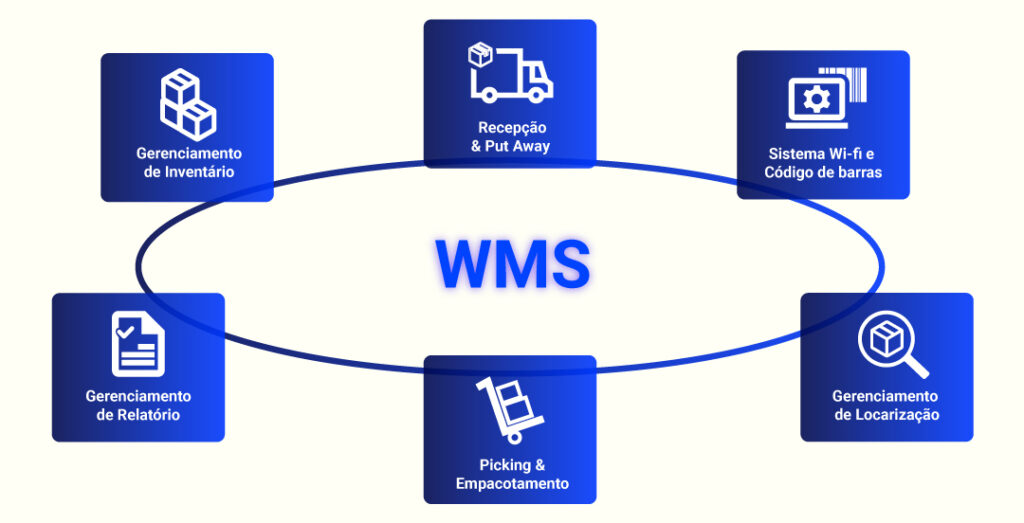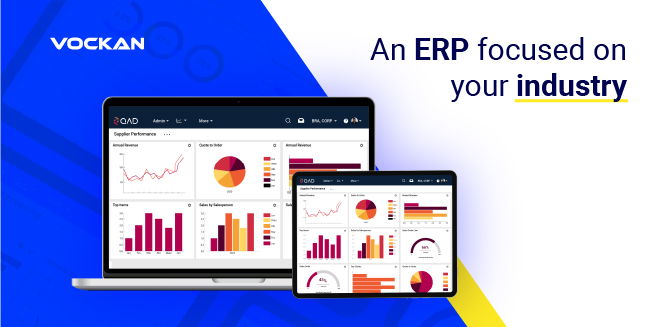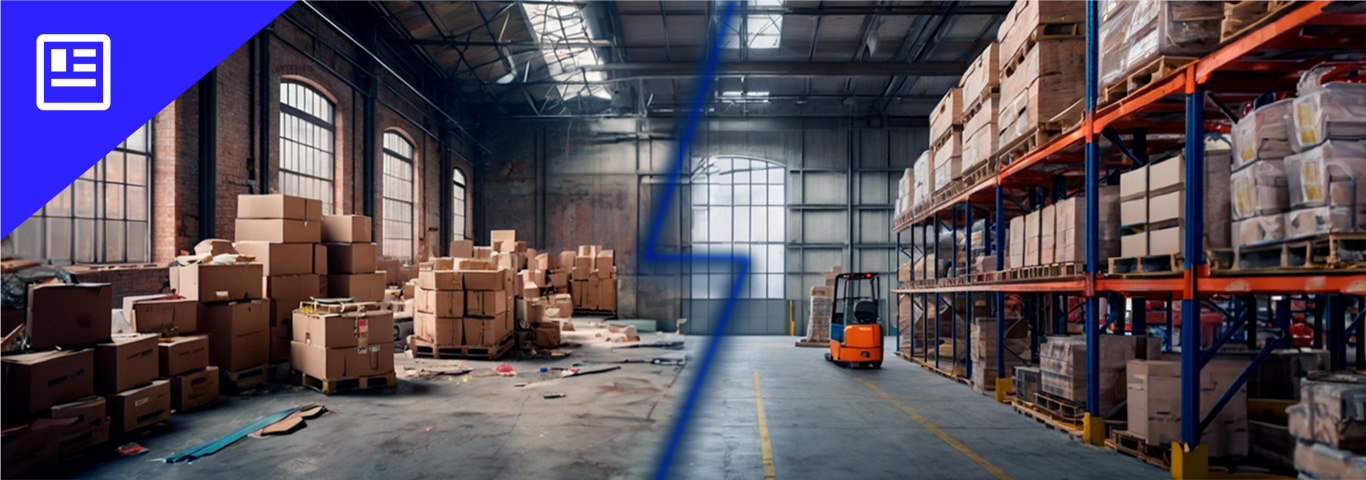Sorting errors. Disorganized inventory. Expiring or missing materials. Shipping delays, rework operations, and operators lost in the warehouse.
Organization truly is the most important tool a company must have in its daily operations. When there’s no organization, there’s a loss of money, labor, raw materials, and missed deadlines.
If your warehouse still relies on spreadsheets, notes, and human memory, your company is throwing money away.
The good news? There’s a solution that can quickly change this: a WMS (Warehouse Management System).
This article will show you what it is, how it works, who it’s for, and why your industry needs it now.
What is a WMS?
A WMS is an intelligent system for managing warehouses and distribution centers. It organizes, controls, and optimizes all logistics processes, from receiving to shipping.
This software can control the allocation of resources and labor, and suggest the best way to store products and materials. It identifies easily accessible locations for high-turnover items and more remote locations for slow-turnover items, optimizing operator travel distances with shorter routes and reducing handling time.
Instead of relying on memory or spreadsheets, the company now has access to real-time data, automated tasks, and complete traceability.
How does the WMS system work in practice?
The WMS functions as the “logistical brain” of the inventory, recording every movement—from the entry of raw materials to the shipment of the final product. By integrating with other company systems, such as ERP, the WMS centralizes data and intelligently distributes tasks, guiding operators on what to do, where to do it, and when.
Each item entering the inventory is assigned a strategic address, defined based on criteria such as turnover, volume, and product type. Furthermore, the system tracks expiration dates, batch numbers, receipt dates, available quantity, and previous movements, ensuring full traceability.
Another advantage of WMS is the real-time updating of inventory data. This eliminates the need for downtime for physical counts and allows for faster and more reliable cyclical inventories.
Adaptable to different types and sizes of operations, WMS can include industry-specific features such as serial number tracking, restricted area management, integration with data collectors, and automation of repetitive tasks.

Who should implement a WMS?
The system is suitable for storage companies of different sizes and complexities, from large, medium, and small warehouses, and even for simple production operations.
It provides detailed instructions on where to store items and what type of equipment to use to move them, such as forklifts or hand pallet trucks.
According to Carlos Zambelli, QAD Certified Professional, “There is no specific minimum quantity to make the program worthwhile, but the more items to manage, the more recommended the use of a tool like a WMS is.”

Read also: Capacity Requirement Planning: What It Is and 7 Tips to Increase Efficiency
Main Benefits of WMS for Operations
Agility in Order Picking
The WMS organizes picking tasks based on optimized routes within the warehouse, intelligently grouping orders. This reduces unnecessary travel, speeds up shipping, and reduces picking errors.
Reduced Operating Costs
With less rework, reduced losses due to mishandling, and increased productivity per operator, the WMS directly contributes to reducing logistics costs. Task automation reduces human error and improves team performance.
Better Use of Physical Space
The system organizes products strategically, considering turnover, material type, and warehouse layout. This avoids idle areas, improves accessibility, and allows for increased stored volume without physically expanding the space.
Full Product Traceability
Each item, batch, and pallet is identified and tracked at every stage within the warehouse. You know exactly where each material is, from entry to shipment, which facilitates audits, meets regulatory standards, and prevents losses.
Operational safety and process standardization
The WMS directs each task only to trained operators and the correct equipment, preventing critical errors such as improper movements, use of substandard forklifts, or storage in inappropriate locations.
Real-time inventory updates
With automated cyclical inventories, you eliminate the need for physical counts. The inventory balance is accurate and always up-to-date, ensuring greater control for PPC, purchasing, and production.
Challenges in WMS implementation and how to overcome them
Implementing a WMS system brings clear gains in control, efficiency, and traceability to industrial operations. However, for these benefits to materialize, it is necessary to overcome some common challenges that arise throughout the project.
Below, we list the main points of attention and, more importantly, how to resolve them with practical actions from the beginning of the implementation.
| Challenge | Solution |
Adapting users to the new digital reality | Engage users from the beginning, explaining the practical benefits in everyday life. Conduct pilots in smaller areas and evolve gradually, providing security and ongoing support |
| Lack of adequate training | Structure an ongoing training plan, with practical materials and field training |
| Connection failures in areas | Map Wi-Fi network coverage before deployment. Use repeaters or industrial mesh networks in critical areas |
| Low user involvement in the project | Include representatives from operational areas in all stages— from requirements gathering to testing |
| Incorrect warehouse and process mapping | Carry out a complete physical and logical mapping, with the support of the operational team and logistics experts |
| Lack of robust testing before go-live | Conduct comprehensive testing with real-world simulations and stress tests. Validate different scenarios (inbound, picking, returns, inventory) before full launch |
| Superficial knowledge of the operation | Collect real-world data on material movement, times, volumes, product types, and physical constraints. Based on this, adapt the WMS to the factory’s logic |
The Future of WMS
For those who experience industrial logistics day-to-day, it’s clear that the future lies in automation—and with WMS, it’s no different.
According to Zambelli, warehouse management systems tend to become even more strategic, acting as the brains behind emerging technologies such as autonomous robots, logistics drones, and smart sensors.
Smarter warehouses, with less human touch in repetitive activities and more precision at every stage of the process. In this scenario, the WMS is not just a support system, but rather the orchestrator of the entire automated operation, connecting equipment, defining priorities, and optimizing flows in real time.
In practice, this means more efficient environments, with reduced operational risks, better use of resources, and increasingly accurate data for decision-making.
And as new technologies gain traction in the industry, the role of the WMS will be to expand visibility and control over everything that happens in the warehouse—with greater agility and less margin for error.

Read also: What is Lead Time? How to Reduce and Optimize Your Production
What’s the difference between WMS and ERP?
A common mistake: thinking that WMS replaces ERP.
It doesn’t replace it. It complements it.
ERP integrates areas such as finance, purchasing, and production. WMS is 100% focused on warehouse operations. And when they work together, you have a complete business view.
Carlos Zambelli explains that “WMS is specifically focused on managing and optimizing warehouse or distribution center operations, such as inventory control, material movement, and storage space optimization. WMS can be integrated with an ERP to improve the efficiency of warehouse operations, providing advanced features not present in an ERP’s standard inventory module.”
How to choose the ideal WMS for your industry?
The right WMS is one that understands your business, connects with what you already use, and scales with what you want to grow.
Choosing the right WMS isn’t just a technical decision—it’s a strategic one. Check out 5 essential criteria you need to consider before signing with any vendor:
- Adherence to your operational reality;
- Integration with your ERP (or a complete ERP with WMS);
- Ability to scale with your growth;
- Implementation time and model;
- Analytics and data visibility.
No more losing money on idle inventory and shipping errors
QAD BR+ ERP is a complete solution to transform your warehouse into a high-performance operation.
See what you get with QAD BR+:
- End-to-end industrial management—Complete control of inventory, production, purchasing, sales, and distribution in a single system.
- Complete tax coverage—100% compliance with Brazilian legislation and market specificities, without any workarounds.
- Real-time data and full traceability—Monitor everything that happens in the warehouse and factory with precision. Agile implementation and local support — Fast, technical, and well-monitored projects, with experts who speak your language and understand your business.
Want to eliminate logistical errors and transform your operation?
Speak with an expert now. We’ll show you how to scale efficiently using QAD BR+.










